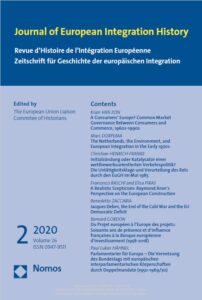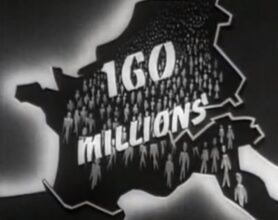News
New article: A Consumers’ Europe? Common Market Governance Between Consumers and Commerce, 1960s-1990s
In the latest publication from the project, Koen van Zon studies the development of consumer governance on the European single market from the 1960s onward. The EU single market is the largest economy in the world, with high standards for protection, so one would perhaps expect that consumers, as its ‘demos’, occupied a central role in the governance of the common market. That was never the case, however, and this article shows how and why this came to be. The article, published in the Journal of European Integration History, can be accessed here.
The article traces the history of institutionalised consumer representation in the European Economic Community (EEC) from the 1960s to the 1990s. It shows which conceptions of the consumer informed single market governance and how the position of consumer governance related to that of commerce. It shows that the position of the consumer in the EEC was predominantly informed by West-German ordoliberal thought, according to which the interests of consumers were best served through competition policy, which enhanced the market mechanism and expanded their free choice of products. In the field of agriculture, meanwhile, pan-European consumer organisations were first being involved in questions about the prices, safety and quality of agricultural produce, albeit in the margins.
EEC consumer governance really kicked off in 1972, when a beginning was made with a European policy of protecting consumers and the environment. While the first consumer policy programme aimed to correct the power imbalance between corporations and consumers on the common market, it boasted a staff of only a handful of civil servants, and its policy initiatives often met with a lot of internal opposition within the European Commission. Consumer organisations were represented in a committee which could advise the Commission, but without any clout to put this advice into practice, its influence was marginal.

All this changed from 1979 onward, when the Cassis de Dijon-verdict by the European Court of Justice forced member states to acknowledge the protection standards of other member states. This gave a strong impetus to common market trade, and was argued to empower consumers. Through their choices, after all, they enabled this trade to flourish. This gave rise to the idea that EEC consumer policy served to provide consumers with the ‘confidence’ that what they were buying on the common market was safe and conformed to high quality standards. Consumer policy, therefore came to be seen from being a correction to the market to being the foundation of consumer trust, which made the market function.
In thirty years of EEC consumer governance, the consumer thus went from being seen as a powerless individual, whose interests were often at odds with those of corporations, to a core constituent of the market, whose choices made the economy tick. As the article shows, this shift was largely rhetorical and belies the fact that underneath, EEC consumer governance actually changed very little over time. All in all, consumer protection governance remained a relatively weak force of social protection within the EEC.
Read the full article here: A Consumers’ Europe? Common Market Governance Between Consumers and Commerce, 1960s-1990s, in: Journal of European Integration History, 26:2 (2020) 203-228.


